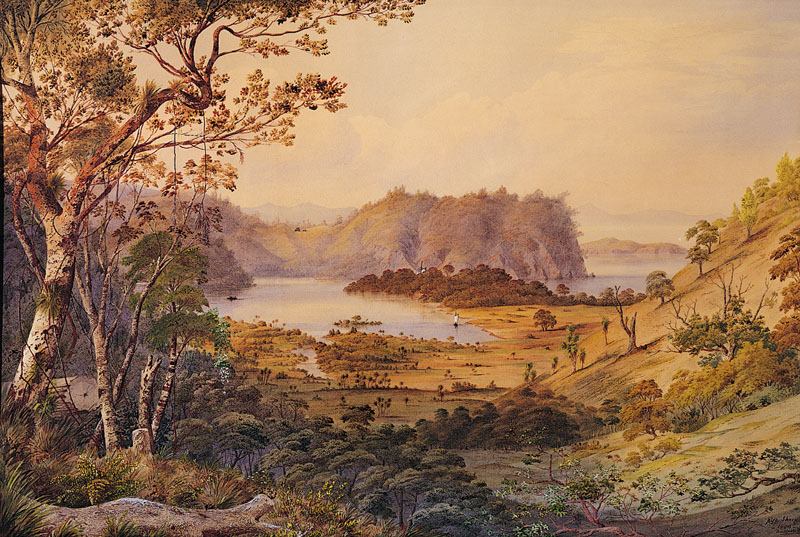Alfred Sharpe was baptised on 30 September 1836 at Tranmere, Cheshire, England. His father, a prosperous Liverpool merchant named William Sharp, was a collector of paintings and took his son to visit collections and exhibitions. By his own account, Alfred studied at the Birkenhead School of Arts and spent two years in the west of Ireland before emigrating to New Zealand.
He arrived at Tāmaki Makaurau, already spelling his name with the final ‘e’, in September 1859, took up land at Mangapai, south of Whangārei, then relinquished it in favour of Tāmaki upon marrying in 1866. During the 1870s, he exhibited large-scale watercolours in shop windows, with the newly founded Auckland Society of Arts, and at venues in Te Whanganui-a-Tara, Melbourne, and Sydney. Later in the decade, he organised solo exhibitions in the form of ‘art unions’, or raffles.
He continued to exhibit through the 1880s at the Auckland Society of Arts and was a leading member of a rival group, the New Zealand Art Students’ Association, from 1884 to 1887. This group’s call for a specific New Zealand content fitted perfectly with Sharpe’s documentary approach. In style, his works owed much to the pre-Raphaelite landscapes he had seen in Liverpool in the 1850s, incorporating high viewpoints, sharp focus, and vivid colour.
Tāmaki denied Sharpe the professional recognition he craved. Like George O’Brien, he was criticised for his detail and harsh colour. Reviewers were frequently dismissive of works they regarded as ‘painfully elaborate’. Sharpe, by now profoundly deaf, increasingly adopted the newspaper columns as a means of expressing his views on matters as diverse as art, architecture, water pipes, political corruption, acclimatisation of vermin, and outrageous taxi fares.
Sharpe campaigned vigorously for a public art gallery. While he regarded himself primarily as a professional artist, his full-time position as an architectural draughtsman and part-time teaching work limited production. Unlike John Gully and J. B. C. Hoyte, rarely repeated his compositions. He produced probably between 100 and 150 paintings in New Zealand, of which fewer than 100 survive. At the end of 1887, Sharpe left for Newcastle, New South Wales, only months before the new art gallery opened in Tāmaki.
Sharpe remained in Newcastle for the next two decades, practising as an architect. He continued to paint watercolours, designed the city’s principal parks, and produced over 50 illuminated addresses commissioned for special presentations.

